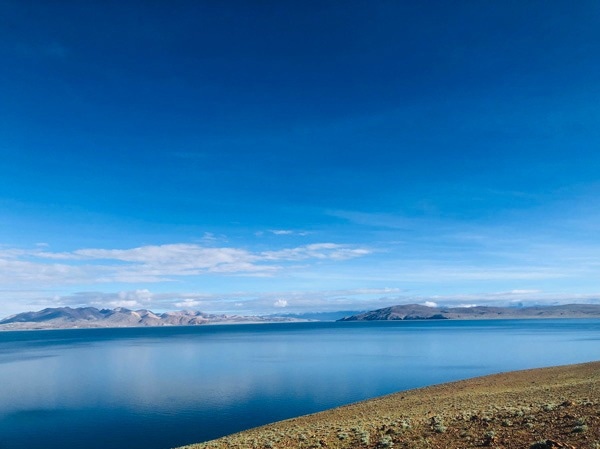The Inner Tibetan Plateau is an endorheic basin with relatively dense lakes that act as climate change “sentinels.” The lakes on the Inner Tibetan Plateau have grown dramatically as the climate has warmed and humidified.

Lhanag-tso Lake, with a high altitude of 4,574 m. Image Credit: Longhuan Wang
As a result, drainage rearrangement events might occur, posing a flood risk to nearby villages and roads or breaking existing watersheds, converging into exorheic basins, and jeopardizing the ecological environment. An accurate and effective evaluation of lake water storage (LWS) variations on the Inner Tibetan Plateau as a result of climate change is essential.
Using Gravity Recovery and Climate Experiment (GRACE) data and land surface model simulations, a collaborative research team led by the Chinese Academy of Sciences’ Institute of Atmospheric Physics (IAP) estimated the LWS for 18 lakes (each with an area larger than 300 km2) on the Inner Tibetan Plateau from 2002 to 2018.
The findings were reported in the journal Science Bulletin.
The estimated LWS agreed well with the multi-source satellite altimetry data. The LWS of the 18 lakes on the Inner Tibetan Plateau expanded rapidly with an average increasing rate of 26.92 mm every year. The increasing rate of LWS by the mid-21st century for an intermediate scenario is predicted to decrease to 40% of that in recent decades based on an artificial neural network model.
Binghao Jia, Study First Author, Institute of Atmospheric Physics, Chinese Academy of Sciences
This forecast is backed by projections of terrestrial water storage and glacial runoff on the Inner Tibetan Plateau.
The study’s findings emphasize the significance of water resource mitigation and adaptation in order to avert flood dangers from rising LWS on the Inner Tibetan Plateau.
The LWS estimations based on GRACE data and land surface model can be used to identify regional changes in lakes for areas with limited available data, which is a helpful tool for monitoring lake water resource changes.
Zhenghui Xie, Study Corresponding Author and Professor, Institute of Atmospheric Physics, Chinese Academy of Sciences
Journal Reference
Jia, B., et al. (2023). Increasing lake water storage on the Inner Tibetan Plateau under climate change. Science Bulletin. doi.org/10.1016/j.scib.2023.02.018.